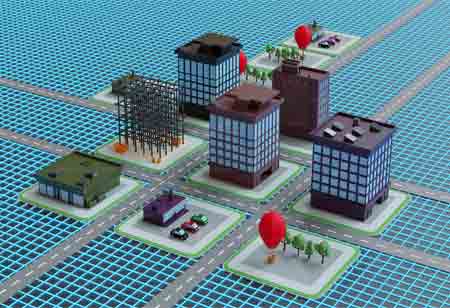Thank you for Subscribing to Gov Business Review Weekly Brief
Law Enforcement's Future: Top Technologies
New technologies, strategies, and concepts have brought a significant positive difference to law execution for the sole aim of retreating to its core: community arrangement and public safety.

By
Gov Business Review | Thursday, March 30, 2023
Stay ahead of the industry with exclusive feature stories on the top companies, expert insights and the latest news delivered straight to your inbox. Subscribe today.
Police and law-enforcement agencies can be better positioned to solve public safety issues with the proper technology and input from community associates and shareholders.
FREMONT, CA: New technologies, strategies, and concepts have brought a significant positive difference to law execution for the sole aim of retreating to its core: community arrangement and public safety.
3 Greatly Embraced Law Enforcement Technics:
Associated Devices & Police Body Cameras
Connected devices (IoT solutions) can enhance law enforcement and public safety with their capacity to provide priceless proof of evidence and notice crime-affiliated action in real-time.
Although the first recorded application of body cams was around 2005, it wasn't until almost a decade later that they were broadly implemented across the US, especially to improve transparency and police response. This complete scale execution allows officers to register factual and matter-of-fact details regarding any incident to help future activities and to build public confidence, as they've been led to enhance officer behavior.
Mobile Applications
Presently there's an app for everything, incorporating law execution and policing. These mobile apps have numerous purposes, involving supporting keeping officers more unexpectedly aware and improving task creation, reporting, and proof gathering accuracy and reassurance.
Some apps were produced with the direct intent of facilitating public interest. For example, Riverside PD established its free app for community associates to access recent news, photos, videos, events, alerts, and crime knowledge. It also has two-way communication abilities and conditions for residents to present unknown tips to the division and file police reports.
Mobile applications unfold the regulations previously encountering law implementation leaders in the field. Multiple apps, like New World ShieldForce and Samsung DeX, extend computer-aided transmission practicality to a smartphone.
A dispatcher can follow an officer irrespective of where they are and transmit a replacement if required. These capabilities also keep officers more unexpectedly aware by offering critical details in real-time. Also, unfolding the lines of communication between PD, their community members, and senders can better guarantee safety for everybody.
Data Analytics for Law Implementation
Data is all over the place, and at this time, with law implementation units deploying different technology solutions comprising those noted above, more details are being developed. Technology is certainly the best means to fastly and successfully aggregate. It studies huge volumes of data to help investigations, implementation actions, and support agencies understand resident feedback and public opinion about law enforcement.
Community understandings and analytics platforms employ technology to impulsively examine millions of public resident-produced data issues from multiple external and internal references. Then gives criminal understandings and tailored reports so local leaders can readily measure and enhance public opinion and decide what matters most to the people they serve. Moreover, its data-driven credentials provide police chiefs and law execution leaders the ability to listen to all of their occupants and can aid in supporting community-related policing.
Community Policing and Technological Inventions
Law implementation agencies have embraced community policing practices since the 1970s to support pioneer policing, better community connections, and enhance service. Community policing – at its core– addresses problem-addressing society, not just the community.
The blend of technological invention and effective community policing approaches can be powerful. Police and law-implementing agencies can be better positioned to unravel public safety issues with the proper technology and input from community partners and stakeholders.
Data analytics that allows departments to learn public view, like those discussed above, can change excellent data – like feelings of trust and understanding of safety – into excellent metrics. Like law undertaking agencies have continuously followed and mapped crime details since the 1930s, analytics technology can aid community policing by mapping and estimating trust. Doing this can help divisions in measuring the efficacy of community policing endeavors, responding to resident preferences, and customizing solutions to distinct communities and community relations. The Redondo Beach Police Department is an outstanding instance of an agency through these analytics to help community policing measures and improve resident trust.
Another law execution technology trend that can back community policing measures is really in the realm of social media. For about a year, police units have been leveraging social media to commit more with community partners – fulfilling residents where they're at, employing more casually, and above all else – communicating – a basic tenet of community policing. Yet, irrespective of whether or not police divisions engage on social media, we learn residents will be online discussing their local officers, affairs, and police reform.
Technological solutions can help community unity by enabling visionary efforts to keep residents safe and genuine in communication and dialogue. The technologies listed above are an important step in the proper direction to aid in bridging the trust gap between law execution and communities.
More in News






